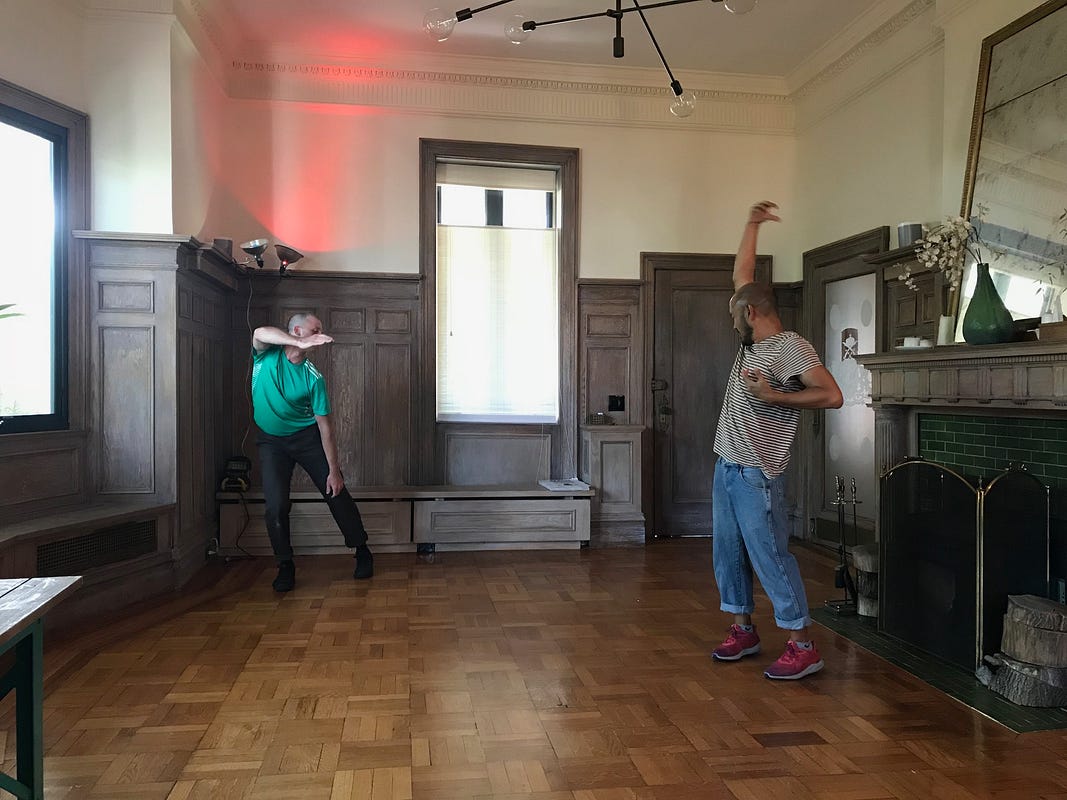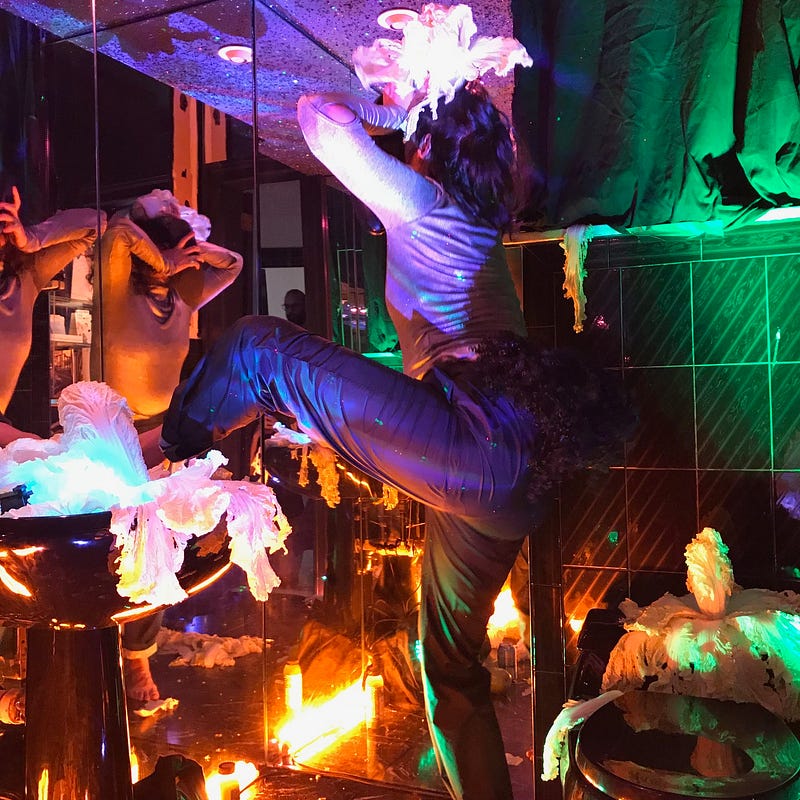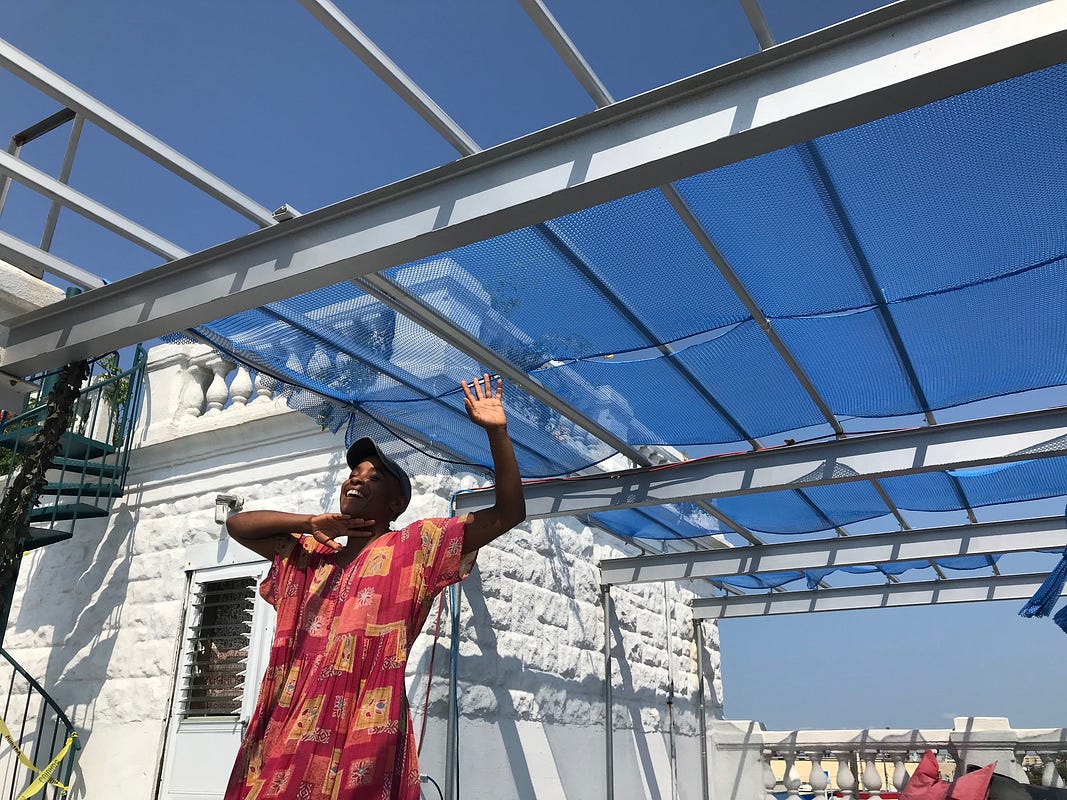Most people know what to expect from a contemporary art museum: a couple of the artists’ greatest hits or their work from the last 50 years, a cafe and bookstore, and likely an installation curated with an eye toward the canon. Where dance institutions can afford it, the same curatorial strategies prevail. But these platforms quickly stumble into a longstanding conundrum of representation.
When larger institutions produce programming featuring “Other” voices and artists, it typically serves the institutional objectives of showcasing as a kind of taxonomy, thus reifying an artist’s otherness and their work as expressive of that marginality. These are less-than-ideal circumstances for the artist looking to engage any political dimension with their work. Add to that the fact that experimental and exploratory performance, in its way, is always looking for a new syntax of expression—it’s no surprise that pop culture views this kind of art as irrevocably weird and arcane.
This creates a challenge of how to responsibly produce and support the creative work of a community or collective while dispensing with cultural indexing. It requires a constant evolution of curatorial practices. AUNTS, a dance organization currently directed by Liliana Dirks-Goodman and Laurie Berg, is by no means new, but their consistent efforts to find new venues and communities keeps the platform evolving.
Beach Sessions, “a pioneering performance series supporting and presenting site-responsive work” in the Rockaways, reached out to AUNTS earlier this spring. Their idea was to create something shorter than a residency, but longer than one night — taking over a house for a weekend, opening its doors to the public for performances, and closing them when it’s time to sleep. Everything you’d want in a vacation and a weekend of dance.
At a palace of a house (the three story bungalow is actually called The Castle) nestled between the retreats of retired policemen and civil service workers, AUNTS performances blurred the lines of exhibit and event with open doors and performances in all spaces. Another feature worth noting is that those performances ran concurrently over the course of both days. There was no isolated music playing in the house; the plurality of work was ever present, making the entire event a kind of installation. The sound of body weight on the floors could be heard through the music anywhere and everywhere.

A dancer wearing little more than a leather harness counterpointed a hooded figure and a bed of flowers on top of the garage; the performance was best viewed from the adjacent balcony on the house. Audience members sat around the perimeter of what’s normally a dining room, watching the unending combination at its center. A 10 person line waited for the bathroom — not to use it, but with phones out to capture the image for later. A woman made a small installation out of the black-tile-and-mirror closet, festooned from toilet to sink with Napa cabbage wilted like late-spring magnolia leaves, and lit with golden and green fluorescent light. She danced inside with Korean pop and a strobe light.

There was a surprisingly diverse crowd for a contemporary art performance. A firefighter type wore a t-shirt saluting both his Irish heritage and a fondness for whiskey. Men wearing fluorescent mesh clothes stood beside local beach dreamers. And there was plenty of chatter happening off to the sides. A teenager and her mother would occasionally interrupt performances to bicker-whisper. Friends would clarify their Twitter misunderstandings. Loud laughs resonated for jokes lost to speaking voice. A guy described Springsteen on Broadway while people eavesdropped. In the middle of his story, a figure materialized across the deck in the middle of the space reading an OK magazine, holding a microphone, wearing clear vinyl boots with three inch heels. People instinctively parted and started watching. The performer read the magazine’s copy, but very quietly, into a microphone intentionally left off.
Performances formally concluded at 9 pm Saturday, but that’s when the dinner and dance party began. Sunday was less congested, and just a touch cooler, lending itself to a few more quiet moments to spend with video and audio installations, a breezy morning DJ set, repeats and revisions from the previous day, and soundscapes overlapping from room to room. More space for conversation and exchange.

The closing ceremony on the beach, however, was entirely different. A simple sandwich board, “Beach Sessions 4:30pm,” demarcated the wide margin of open sand between the dune grass and the pack of beach towels and umbrellas. Music started, and small combinations and sequined costumes emerged from the surrounding crowd.
Most beach goers had turned around by now to watch the performance by six ecstatic and different bodies in motion, their energetic presence prioritized over any attempt at unison. Watching the crowd dance along was even more joyous than watching the dancers themselves. It had to be exhausting to dance on the sand for 30 minutes. Three songs later, more than half the audience — beach sessions and beach goers — were all up and moving, working an electric slide variation. A couple of bros, shirtless and still holding a football, jumped in the mix. Some 50 people strong, Stevie Wonder blaring, closing out a beach weekend with a bang.

Audience has always been integral to performance, and finding ways of dissolving that boundary electively has been key to finding new ways of sharing work. That AUNTS returns to a format that promotes this exploration, continually revises the framework around the presentation of art, and still reserves a space for an enormous dance party, suggests that there’s a vibrant and enduring opportunity to share — and it depends upon as many creative voices as possible.
Tell us on Facebook, Instagram, or Twitter if you have a favorite gallery, art center, or local institution that showcases new ideas!
All photos by Liliana Dirks-Goodman
1) Performer: Katrina Reid
2) Performers: Justin Cabrillos and Matthew Shalzi
3) Performer: Jessica Cook
4) Performer: Jasmine Hearn
5) Performers: Biba Bell, her cast, and a variety of beachgoers that joined in